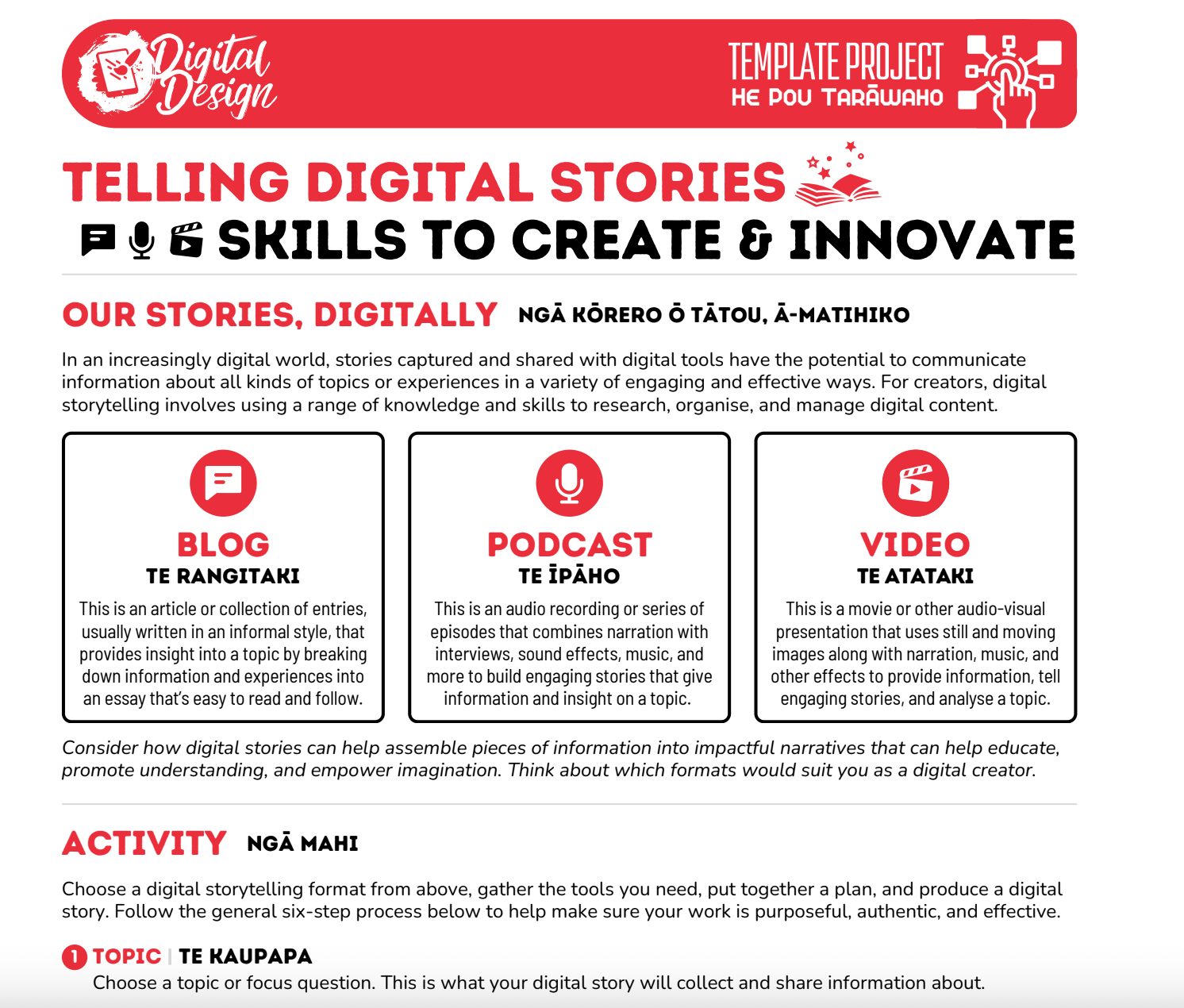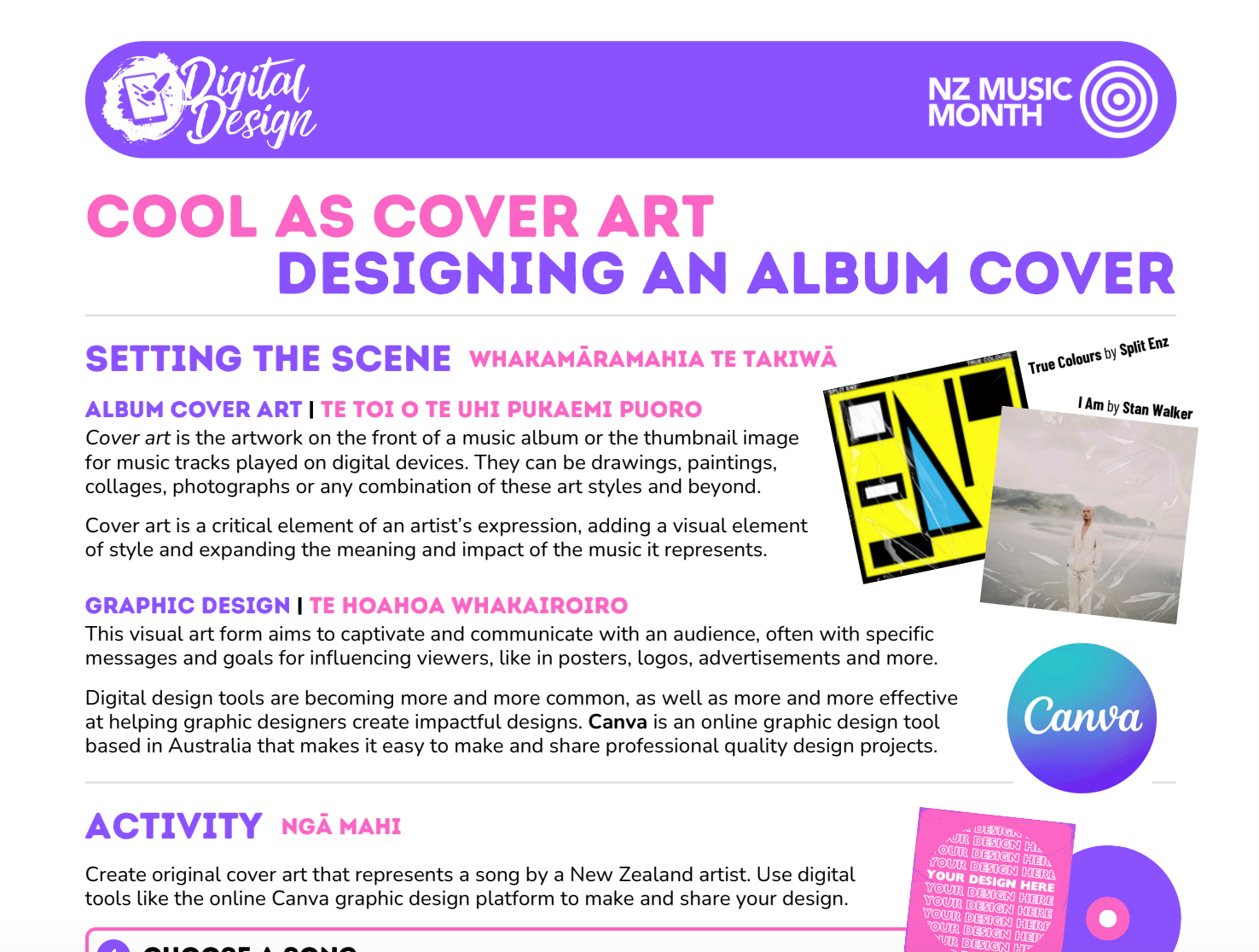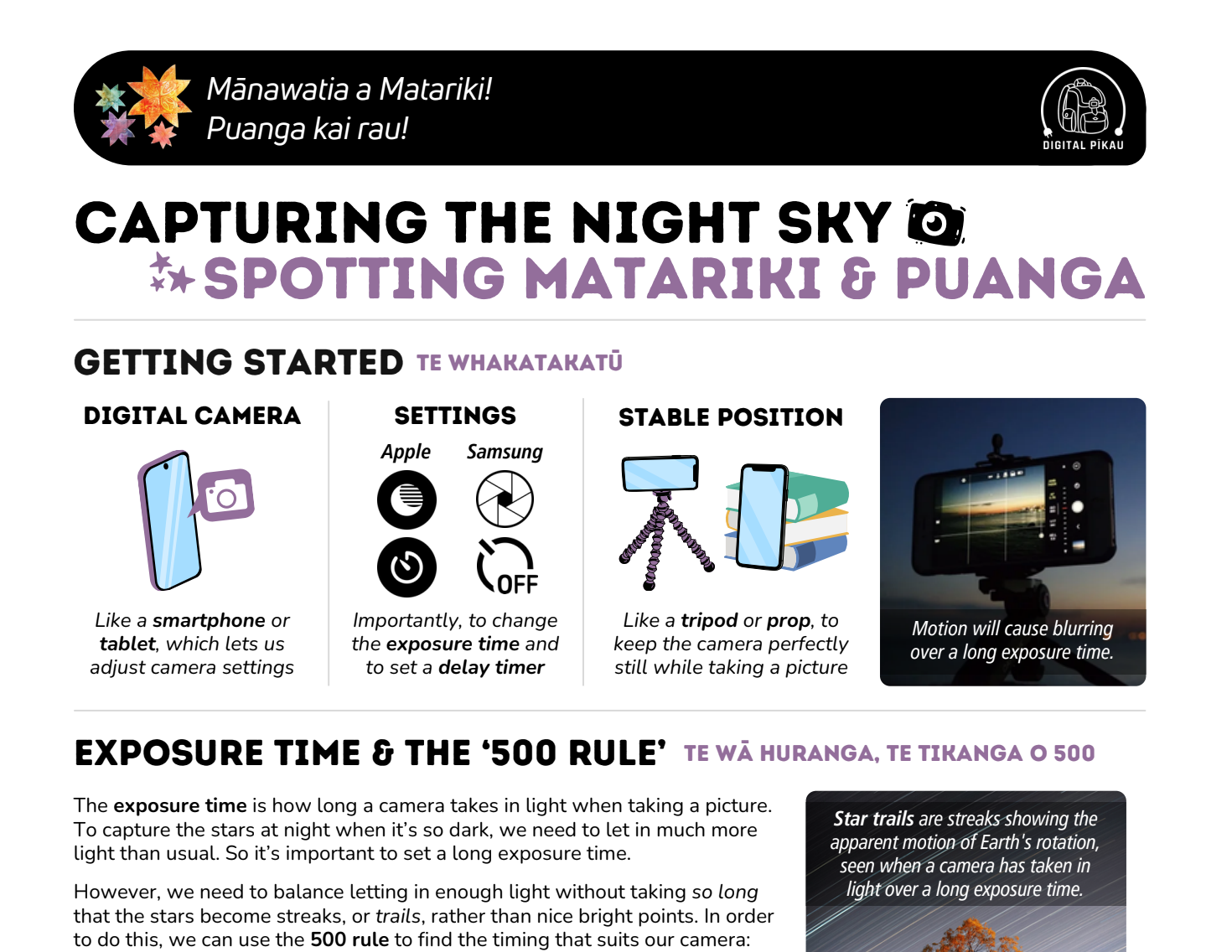How to Integrate Digital Technologies in Term 3
Kia kaha, kia māia, kia manawanui – let’s make Term 3 count! 🎒✨
Term 3 offers a unique blend of celebration, reflection and growth, and it’s packed with opportunities to bring digital technologies into the mix in purposeful, Aotearoa-specific ways. Whether it’s exploring wellbeing with Te Whare Tapa Whā, preparing for Ag Day, or marking Te Wiki o te Reo Māori, the Digital Pīkau has free, classroom-ready resources to support every step.
This blog brings together practical DT ideas aligned with real-world learning — all mapped to NZC progress outcomes, and all able to be self-led at your own pace. Let’s dive in.
🗣 Te Wiki o te Reo Māori
Digital Technologies can help build authentic, interactive opportunities to practise and normalise te reo Māori in the classroom.
During Te Wiki o te Reo Māori (Week 8), consider using DT tools to support both language learning and cultural celebration. Activities like building a chatbot in Scratch or creating digital stories offer tamariki a way to hear, speak, and see te reo Māori in new contexts. By embedding digital tools into your reo learning, you’re also reinforcing Progress Outcome 1–3 elements, such as developing and modifying simple programmes and evaluating digital outcomes for real-world users.
Try this:
Māori Chat Bot (Scratch) – Learners build a digital chatbot using basic Scratch coding and conversational te reo Māori.
History and Storytelling – Explore history, storytelling and cultural knowledge by integrating digital storytelling skills.
Reo Māori Resources – Extend your programme with free waiata, karakia and classroom posters, or use the Te Taiao Booklet to explore biodiversity in te reo.
🌱 Hauora with Te Whare Tapa Whā
Digital tools offer new ways to reflect, journal, and share our wellbeing journeys.
Wellbeing is more than just a feel-good focus; it’s a powerful way to connect Digital Technologies with everyday life. By exploring hauora through a DT lens, learners get to practise data collection, visual communication, and design thinking. Using tools like Canva, Pic Collage or digital storytelling apps, tamariki can capture and reflect on their wellbeing across all four pou of Te Whare Tapa Whā — strengthening both their self-awareness and tech skills.
Try this:
Choose a kaupapa like planting, and use digital photos, videos or journals to document progress through the lens of Hinengaro, Wairua, Tinana, and Whānau.
Use Canva or Pic Collage for term goal-setting or gratitude posters.
Explore the Maramataka planting guide and create digital planting schedules or moon calendars.
Link to Mental Health Foundation for digital activities that support resilience, reflection and connection.
This approach supports Progress Outcomes around developing digital content, designing digital outcomes and working with user needs (like their own hauora focus!).
🐮 Calf Club / Ag Day
Turn a classic rural celebration into a multi-disciplinary DT experience.
Ag Day is rich with storytelling, measurement, and creativity, all of which map perfectly to the DT curriculum. By integrating simple digital tools, learners can track growth, build games, create digital posters or tell the story of their animals using coding and multimedia. These projects can be shared with whānau or the wider kura, creating an authentic audience and purpose for learning.
Try this:
Use Scratch Jr or Scratch to animate an animal's journey (from farm to show day).
Create Canva posters to promote your Ag Day event or tell your pet's story. A fresh angle on this style of activity is to create an album cover for their hypothetical album.
Record a photo diary and turn it into a slideshow or iMovie project.
Let senior students design interactive Ag Day games on Gamefroot.
These activities reinforce DT concepts such as decomposing tasks, sequencing events, and presenting data visually — all within a high-interest, community-connected context.
🌌 Te Taiao — Hōtoke & Kōanga
Seasons provide a natural rhythm for integrating DT, reflection and storytelling.
Digital Technologies can elevate how we explore the environment, whether it’s by tracking seasonal changes, mapping whakapapa, or stargazing. These activities connect learners to the whenua and their whānau while practising computational thinking, digital design and data visualisation. Best of all, they invite learners to bring their identity and culture into the frame.
❄️ Hōtoke (Winter):
Use Scratch Jr Digital Storybooks to retell family stories or seasonal traditions.
Record a whānau pūrākau and present it as a podcast or blog.
Use Stellarium to revisit the Matariki cluster and explore star positions as we head into clearer spring skies.
🌱 Kōanga (Spring):
Start a garden tracking project. Use tablets to photograph growth and create weekly captions or short videos.
Build a simple game on Gamefroot about seed life cycles, pollination or composting.
Use digital calendars or maramataka to monitor planting, moon phases and seasonal patterns.
These projects provide practical applications of data collection, visual literacy, and iterative design — all part of the DT curriculum in action.
🎒 Your Digital Pīkau is Ready to Go
The Digital Pīkau is your go-to for free, curriculum-aligned resources that are easy to use and made for Aotearoa classrooms. Whether you're working online or unplugged, you’ll find projects that empower you to teach Digital Technologies in ways that feel natural, doable and meaningful.
🎯 Explore the full Pīkau here:





